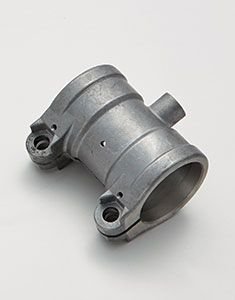You know, when I first heard the term “zinc alloy,” I wasn’t sure what to think. I mean, zinc? Isn’t that the stuff they use to coat steel so it doesn’t rust? But once I dug a little deeper, I realized there’s a lot more to it. Zinc alloy is actually a blend of zinc and other metals, and it’s used in all sorts of things, from car parts to—yep, you guessed it—handles. Let’s break it down.

Zinc Alloy Definition
At its core, zinc alloy is just zinc combined with one or more other metals, like aluminum, copper, or magnesium. The idea behind this is simple: while zinc is a pretty solid metal on its own, mixing it with others enhances its strength, flexibility, and corrosion resistance. Think of it like making a smoothie—each ingredient brings something different to the table, and when combined, the result is way better than any one part on its own.
Zinc on its own is somewhat soft and doesn’t always hold up well under stress, but when you mix it with a metal like aluminum, it becomes stronger and more durable. And when you throw copper into the mix? It helps with corrosion resistance, which is a big deal if you’re making something like door handles that get exposed to moisture or fluctuating temperatures. So basically, zinc alloy is like the best of all worlds when it comes to making metal products that need to last.
Composition of Zinc Alloy
The specific composition of zinc alloy can vary, but here’s the common breakdown:
- Zinc: Makes up the majority of the alloy. It’s affordable, easy to melt, and can be molded into precise shapes.
- Aluminum: Adds strength without adding too much weight, which is why you’ll find it in everything from airplane parts to kitchen hardware.
- Copper: Copper’s here for its anti-corrosive properties. It keeps the zinc from rusting or tarnishing when exposed to air and moisture.
- Magnesium: This one helps refine the grain of the metal, which means the surface of the finished product will be smoother and more uniform—super important if you’re making decorative handles that need to look good and feel good in your hand.
Each of these metals brings something unique to the table, and when combined, you get a material that’s lightweight, strong, and can hold up in a variety of environments. That’s why zinc alloy handles are so popular in places like kitchens and bathrooms, where you need something that won’t rust but also looks stylish.
Manufacturing Process
The process of turning zinc alloy into products, like handles, often starts with die-casting (which we talked about earlier). Once the alloy is prepared, it gets heated to a molten state and injected into molds. This process allows for precise control over the shape and size of each handle, ensuring that every piece comes out uniform.
One thing I’ve learned about zinc alloy is that it cools and hardens quickly, making it an efficient choice for mass production. That’s why so many manufacturers prefer using it—they can crank out a ton of parts in a short period of time without sacrificing quality. Plus, zinc alloy can be polished, coated, or plated, which gives it a shiny, smooth finish that looks great in homes.
A Brief History of Zinc Alloy in Hardware
Believe it or not, zinc has been used for centuries in one form or another, but it wasn’t until the 20th century that zinc alloy really started to take off in the hardware world. Before that, manufacturers primarily relied on materials like iron and brass for things like door handles, but those came with their own problems—iron would rust, and brass was expensive.
When zinc alloy came along, it offered a cost-effective and durable alternative that could be easily molded into various shapes. As die-casting technology improved, zinc alloy became even more popular in the manufacturing of hardware. It was suddenly possible to make high-quality handles, knobs, and other hardware components at a fraction of the cost. Plus, zinc alloy was lighter than most other metals, making it easier to install and use.
Today, zinc alloy is the go-to material for many manufacturers, not just because of its versatility but because of its eco-friendly properties. Zinc is a recyclable material, which means that when products made from zinc alloy reach the end of their lifecycle, they can be melted down and reused, reducing waste.